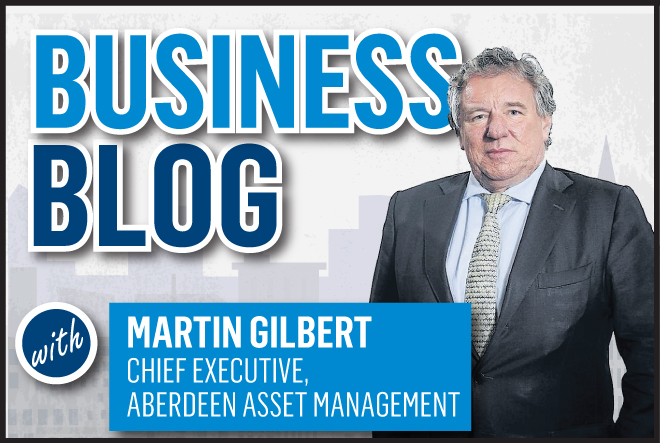“My job was to make everyone understand that the impossible was possible. That’s the difference between leadership and management.” Those words of legendary football manager Sir Alex Ferguson in his new book “Leading”, co-authored with Michael Moritz of Sequoia Capital, should provide food for thought to every CEO.
Long before his achievements at Manchester United and his forging of an international reputation, Alex Ferguson was already my hero. I remember the sense of optimism he inspired when, on his watch as manager, Aberdeen FC won the European Cup Winners’ Cup in 1983, the year we launched Aberdeen Asset Management.
We couldn’t have hoped for a better omen. That helped convince me the impossible was possible and our subsequent experience at Aberdeen proved this true. I take his point, too, about the difference between leadership and management, though we should never undervalue the important task managers perform.
Leaders and managers are not conflicting roles, they’re complementary. Managers may often be implementing policies devised by others, but that doesn’t mean they can’t be inspirational leaders of their division.
In his book Alex Ferguson singles out a number of key issues in leadership, including what he calls Owning the Message – the need for a leader to communicate clearly his vision and intentions to all the people working with him. I agree, and in doing so clarity is crucial.
In the chapter specifically devoted to the practicalities of leadership Ferguson homes in on three issues: Control, Delegation and Decision-making. He admits in his early years as a manager he made the mistake of trying to control everything. We nearly all do when we first take up a leadership role, then we realise we’ll be dead if we don’t let go.
Eventually he discovered the importance of delegation: “Control and delegation are two sides of the same coin…” That ’s exactly right. If a CEO’s desk is covered with emails about matters that someone else is paid to handle, there is something wrong. No boss can manage, let alone lead, effectively if he is trying to do the jobs of his employees as well as his own.
As for decision-making, Alex Ferguson freely admits he made a few wrong calls: selling the Dutch defender Jaap Stam to Lazio in 2001 was a decision he particularly regrets. But he believes hesitancy is even more damaging. Again, he’s right. If the man at the top doesn’t grasp the nettle, nobody else can do it for him.
Leadership is for the long haul, as Alex Ferguson’s career demonstrates. He managed Manchester United for 27 consecutive seasons and his performance never waned: in his final five years his club came top of the Premier League three times and took second place twice.
Alex Ferguson personified the ambition recommended to leaders in all walks of life by Andy Falconer, an Aberdonian now a headmaster in York, in his blog: “Make the next five years your best five years as a leader.” It might as well read “20 years”, for it’s the forward-looking ambition that counts at any stage of a career.
Andy Falconer’s recipe for improved leadership includes taking the trouble to motivate colleagues by expressing appreciation, when deserved, and taking colleagues with you when making a decision (“Here’s what I’m thinking”), rather than handing it down in an authoritarian manner.
This is the most important component of leadership – Emotional Intelligence, or EQ. In my view, EQ trumps IQ as a leadership qualification. Unlike delegation, it can’t be taught. A leader has to have the ability to deal differently with different people.
Falconer is right to highlight the importance of making tactful offers of help to colleagues who are temporarily struggling. There’s a time to put an arm round someone and provide encouragement.
What he calls “Courageous Conversations” are those occasions when it’s necessary to tell the unpalatable truth in a kind way. That’s when the clarity a leader should cultivate in communicating with colleagues needs to be tempered to avoid sounding brutal.
A true leader’s energy doesn’t diminish when he ceases to head his organisation. The north-east of Scotland will benefit from a new initiative by Sir Ian Wood who over 45 years as CEO then chairman of Wood Group built it up to become an energy service giant operating in over 50 countries.
In collaboration with private and public-sector partners he has helped to launch Opportunity North East (One), a body that aims to streamline the North Sea oil industry while also diversifying the local economy, promoting investment in the food and drink industries, agriculture, life sciences and tourism.
Helped by £25million funding from the Wood Foundation, One is designed to reshape the North-East economy to sustain jobs and prosperity even when the offshore energy industry loses its dominant role. Its mindset is long-term, collaborative and dynamic – precisely what leadership is about.
